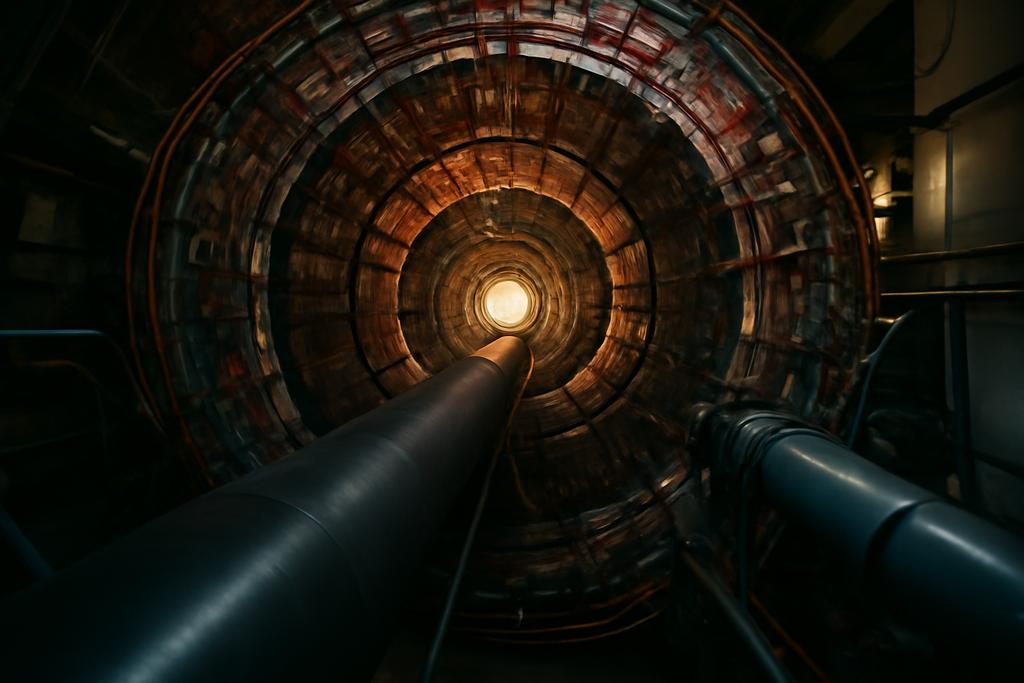The Large Hadron Collider (LHC), that magnificent atom-smasher nestled beneath the Franco-Swiss border, has yielded another intriguing clue in the hunt for physics beyond the Standard Model. A new study from researchers at the Indian Institute of Science Education and Research Thiruvananthapuram, led by Arijit Das, Tanumoy Mandal, Subhadip Mitra, and Rachit Sharma, has significantly refined our understanding of vector leptoquarks (vLQs), hypothetical particles that could hold the key to some of particle physics’ most stubborn mysteries.
The Elusive Leptoquarks
Imagine particles that bridge the seemingly separate worlds of quarks (the constituents of protons and neutrons) and leptons (like electrons and neutrinos). These are leptoquarks, proposed decades ago as potential components of unified theories that attempt to weave together the fundamental forces of nature. They are not just theoretical curiosities; their existence could explain a number of persistent anomalies in particle physics, such as the muon’s anomalous magnetic moment – a tiny discrepancy between the experimentally measured value and the Standard Model prediction that hints at the presence of some unknown, “new physics.”
Leptoquarks come in various “flavors,” distinguished by their quantum numbers, like different kinds of fruit. This new study focuses on vector leptoquarks, a type with a specific quantum spin. The LHC has been searching for them for years, but these particles are incredibly shy—if they exist at all, they are extremely difficult to spot directly.
The Indirect Approach
Direct detection of vLQs is hampered by the high energies needed to create them. This is where the ingenuity of this new research comes in. The team took an indirect approach. Instead of looking for the vLQs themselves, they looked for their subtle influence on existing LHC data. It’s akin to detecting an invisible ghost by observing the subtle disturbances it leaves behind.
The researchers cleverly exploited the fact that vLQs can indirectly interact with quarks and leptons through a process called “t-channel exchange.” This exchange, though fleeting and faint, can interfere with the ordinary Drell-Yan process (a well-understood interaction where quarks and antiquarks annihilate to produce a pair of leptons), subtly altering the distribution of the final products. It’s a delicate dance of quantum interference, and the effect is either constructive or destructive, depending on the type of vLQ involved.
Beyond Pair Production
Prior attempts to constrain vLQs focused mainly on their pair production – like two ghosts appearing simultaneously. However, this new work examines various production mechanisms, including single production and indirect production. It’s like searching for a single ghost versus a pair, or the lingering scent of a ghost rather than a direct sighting. This comprehensive approach is what gives the study its power.
In addition to the indirect effects, the team also accounted for “QCD-QED mixed pair production,” a process where the strong and electromagnetic forces work in concert to produce a pair of vLQs. This nuanced approach led to improvements in the model-independent mass limits – the minimum mass a vLQ would need to possess to avoid being detected.
The High-Mass Regime and Effective Operators
The researchers also tackled the high-mass regime, where vLQ’s mass is far too large to be produced directly. In this realm, a technique called effective field theory (EFT) comes to the rescue. By integrating out the heavy vLQs, the researchers derived effective operators – simplified representations of the underlying physics – that can be tested against experimental data. Their findings verified that these effective operators accurately predict the behavior of the full theory at high masses.
The Impact
This new research yields significantly improved exclusion limits on vLQs compared to previous studies, effectively narrowing down the possible parameter space where these particles could exist. The updated limits are more precise because they account for a wider variety of vLQ production mechanisms and interference effects. It represents an important advancement in our quest to comprehend the deeper mysteries of the universe’s fundamental structure. The more precisely we can define the absence of vLQs, the closer we get to finding them – or ruling them out completely.
Moreover, the validation of the effective operator approach at high masses is a significant methodological achievement. This approach allows scientists to use data from LHC searches designed for different purposes, in the quest to unearth evidence of these elusive particles. While the direct observation remains elusive, the refined indirect techniques demonstrate the persistent dedication and creativity of particle physicists in pursuing physics beyond the known.










